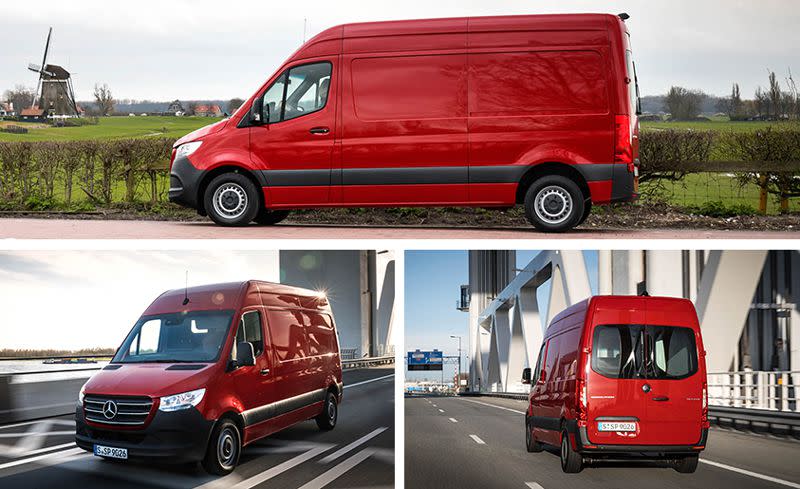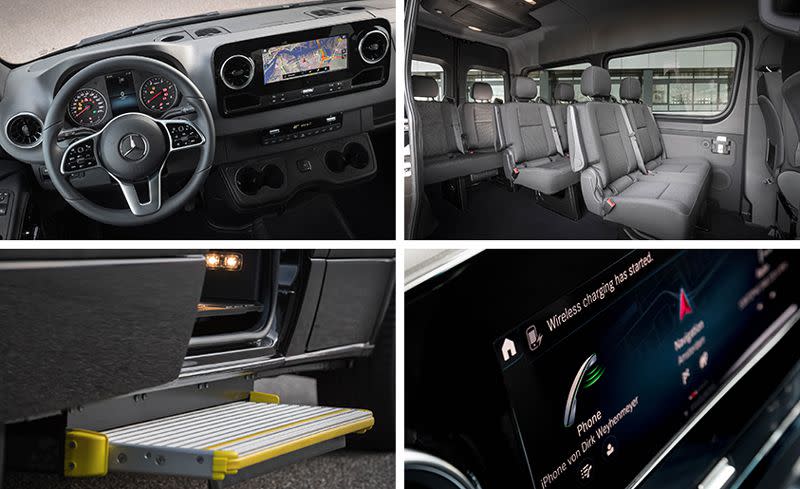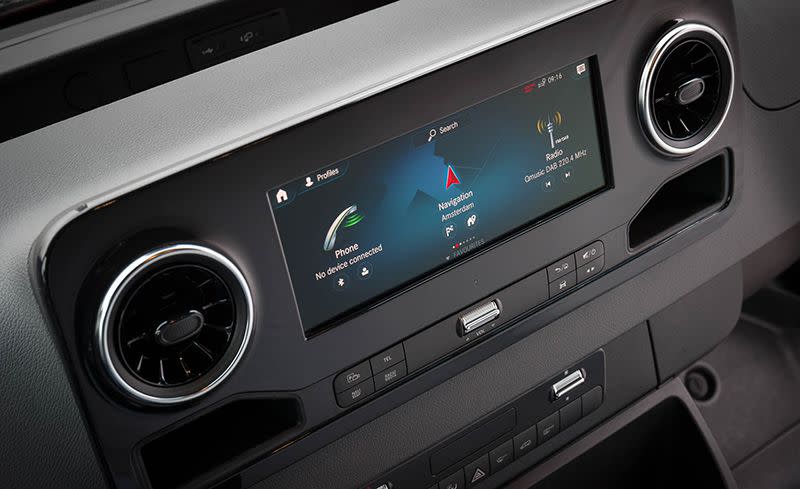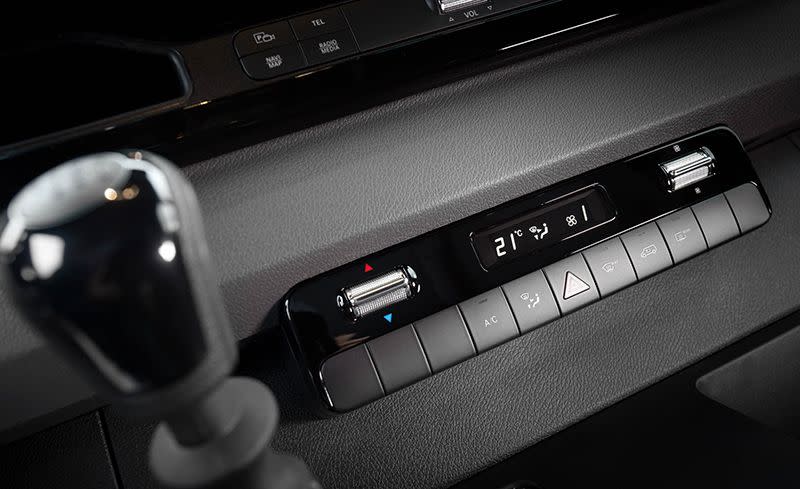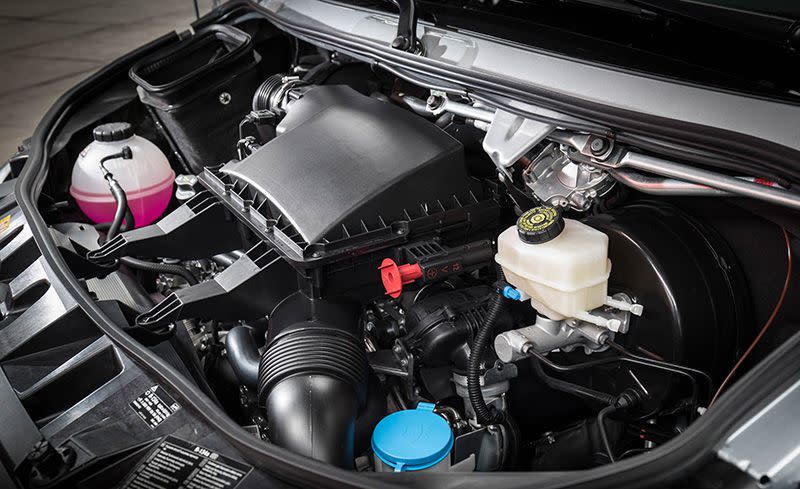Part of the Family: Mercedes-Benz Sprinter Driven
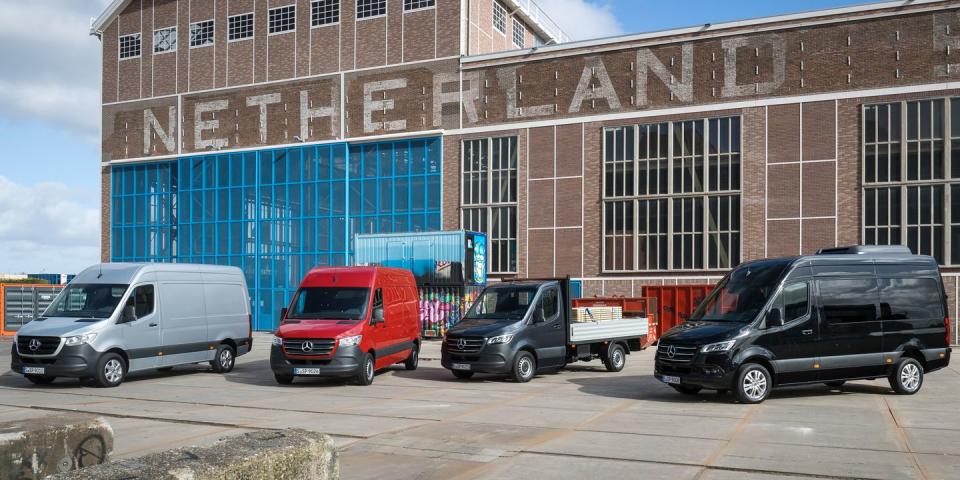
Mercedes-Benz was initially hesitant to launch the Europe-developed Sprinter van in America. The concern was that our market would be confused by a luxury brand selling a vehicle mostly for commercial use and that the blue-collar audience for commercial vans didn’t exactly align with the image Mercedes-Benz had created for its luxury sedans and sports cars. But the market was just too large to ignore, so the Sprinter set sail for America. As it turns out, the Sprinter has not only been a sales success here (badged as both a Mercedes-Benz and as a Dodge) but has become something of a cult vehicle. Now the Sprinter has been completely redone, with a new generation launching for the 2019 model year.
In tandem with the new model, Mercedes-Benz upped its commitment to the segment by investing $500 million into the South Carolina plant where vans are currently reassembled from knocked-down kits. The new space includes a body shop, a paint shop, and a full assembly line, which marks a major shift in how M-B’s vans will be built. Instead of manufacturing the vans overseas, partially disassembling some of them, and reassembling them in America (a tactic used only on the cargo versions of the vans to avoid a trade tariff on imported trucks known as the chicken tax), all U.S.-market Sprinters will be assembled completely in South Carolina. This will allow for faster production times, quicker delivery, and better profit margins.
The United States is the second-biggest van market for Mercedes-Benz, after Germany. Dealers moved 6622 Sprinters in the U.S. in the first three months of this year, although that’s not quite half the amount of the brand’s best-selling passenger car, the C-class. And those numbers still pale in comparison with the more than 30,000 Transits that Ford sold (not including the smaller Transit Connect) in the same period, but Mercedes-Benz hopes the new plant and an all-new product will help close the gap.
“Hey, Mercedes”
As evidence of how important the Sprinter is to Mercedes, it is only the second U.S.-market vehicle to receive the brand’s new infotainment system called MBUX, which is short for Mercedes-Benz User Experience. Customers have the choice between a 7.0- or a 10.3-inch touchscreen positioned atop the dashboard. The touchscreen is a first for the Sprinter and will be a first for other Mercedes-Benz vehicles once the system is incorporated across the brand lineup. Drivers or passengers can operate MBUX via touch, voice, or steering-wheel controls.
The touchscreen is set up with a fairly typical smartphone-type architecture. As was the case with the previous Mercedes-Benz infotainment system, learning the layers and hierarchy takes some time but is easy enough. Scrollable menus and clearly marked icons aid navigation. There is a volume rocker switch for those who prefer physical buttons. The steering wheel features a pair of touchpads and button layouts. The left side, which also has cruise-control switches, operates the in-cluster information screen. The right side controls the main head-unit screen with buttons for phone, menu, back, and voice control.
The new voice-control system is a big deal for Mercedes-Benz. The basic technology has been in the company’s vehicles for some time now, as is the norm today, but with MBUX, the system is billed to work as a personal assistant similar to Apple’s Siri or Amazon’s Alexa. The system is activated any time it hears the word “Mercedes”-although speaking with an accent confused the system during a demonstration. It even picks up the word during casual conversation, something that annoyingly happened several times during our test drive; it doesn’t require a phrase like, “Hey, Siri” to activate.
What distinguishes the Sprinter’s version of MBUX is a new telematics feature called Pro Connect, devised for commercial users. The program, which pairs with a specially developed smartphone app, allows businesses to send messages and destinations to fleet drivers, see live tracking and vehicle information, use artificial intelligence to discern better driving habits, and create restrictions or parameters for various profiles based on the vehicle or the driver. This makes it easy to monitor driving habits and fuel efficiency of each vehicle, distribute assignments, and oversee status updates.
Have It Your Way
The new infotainment system is just the start of the Sprinter’s interior overhaul. Mercedes-Benz looked to its passenger cars for a long, sleek, and simple design inspiration. The vans now feature a tiered dashboard, a centered row of HVAC buttons, and stylized circular HVAC vents.
The interior is not as luxurious as a typical Mercedes-Benz because the Sprinter is still primarily a working van. Beyond the infotainment screen, a miniature door-armrest pad, and a few bits of metal trim, the inside is a plastic paradise. It’s neatly organized, but nearly everything is shaped from textured, hard-touch panels. The seating position is high, there’s no center console separating the driver from the front passenger, there’s visible metal beneath the seats, and interior gaps are apparent.
Because Americans are Americans, one of their top complaints about the old Sprinter was a dearth of beverage security. So now the front cabin can be configured with up to 10 cupholders, five for each side, including two that can hold jumbo fountain-drink cups. To accommodate the demands of connected drivers and passengers, Mercedes-Benz added the option for an integrated Wi-Fi hotspot and plenty of connection points. Wireless charging is optional, and a mix of USB-C, 12-volt, and 115-volt AC outlets are available. Those who use standard USB ports will need adapters, but the system is Apple CarPlay and Android Auto compatible.
Other changes include improved seat cushioning and a driver’s seat with optional deleted side bolstering for easier ingress and egress. On passenger models, Mercedes added the option for reclining seats in the rear rows, and the process for removing the rear benches has been simplified. With the new design, there is a lever that unlatches the seats, or they can be reclined via built-in handles atop the seatbacks. The seats can be removed using integrated rollers on the bottom; they’re still heavy, so a second person is probably required, but the overall execution is simpler.
Power Box
Mercedes-Benz claims the Sprinter can be configured more than 1700 different ways (globally), including-for the first time-with front-wheel drive, a feature being promoted for its cheaper entry-level price and its lowered load floor. A nine-speed automatic transmission is new and the six-speed manual has been refined, but neither the manual nor the front-wheel-drive configurations are available in America. Yanks will once again have the option of rear- or all-wheel drive and can pick between a North America–only gasoline 188-hp inline-four with 258 lb-ft of torque, a 161-hp turbo-diesel four-cylinder making 266 lb-ft, or a 188-hp turbo-diesel V-6 with 325 lb-ft.
We spent most of our driving time in and near Amsterdam behind the wheel of the 316 CDI Tourer, which has the turbo-diesel four paired with a seven-speed automatic delivering torque to the rear wheels. The engine provides a background soundtrack of turbo whistle and diesel gargle, but it wasn’t overly obtrusive. This Sprinter did everything we asked of it and handled demands from our right foot with no complaint. The seven-speed is quick to respond and always seemed to know exactly which gear to grab. Kickdown requests were responded to promptly for confident passing, and the smooth upshifts were barely noticeable. The only time the van felt remotely sluggish was during hammer-down acceleration, but even then it’s no sloth. Amusingly, the seven-speed automatic also comes with paddle shifters.
Although it will not be making its way overseas, we couldn’t resist trying the six-speed manual, which may not have been a good decision, as we only wanted more after driving it. The clutch effort is light, and the engagement point is easy to learn. The gearbox is fun to operate, with short shift throws. All Sprinters we drove also had engine stop/start technology, which was smooth and quiet but also can be turned off.
Most of our driving took place on straight highways or in traffic-both likely scenarios for van pilots-with not much in the way of curvy roads. For 2019, the rear-wheel-drive Sprinter ditches its hydraulic steering rack for an electrically assisted system, and there is zero communication from the ground to the wheel. The steering is slow but builds effort progressively and evenly. More important, the turning radius is surprisingly good.
A highlight of the new Sprinter is its ride quality. In cargo, chassis-cab, and passenger configurations, the vans felt composed and smooth. With new springs and dampers, the Sprinter was comfortable and quiet and bucked the typical reputation of utility vehicle. There were no creaks or squeaks, and body roll was kept in check, with the expected swaying intruding only during jerky turns or hard stops. Carried over from the previous generation is Crosswind Assist, which worked its magic against the gusts that make windmills so prevalent in Holland. This technology, which comes into play at highway speeds, recognizes body tilt and will brake a wheel to help keep the slab-sided Sprinter in its lane without impacting speed. Even with the numb steering, keeping the Sprinter pointed straight isn’t much work.
For the new generation, Mercedes-Benz maintained everything good about the Sprinter and improved what needed updating. The clean-sheet cabin is a significant upgrade in design and introduces a wave of technology specially tailored to maximize the function of a commercial van. New powertrain offerings build on already good units, and connectivity is among the best of any Mercedes-Benz vehicle. This latecomer to the brand is fitting in better than ever.
You Might Also Like

 Yahoo Autos
Yahoo Autos 